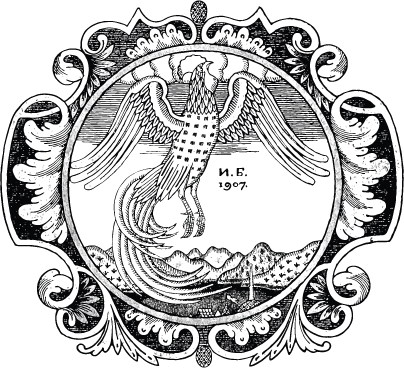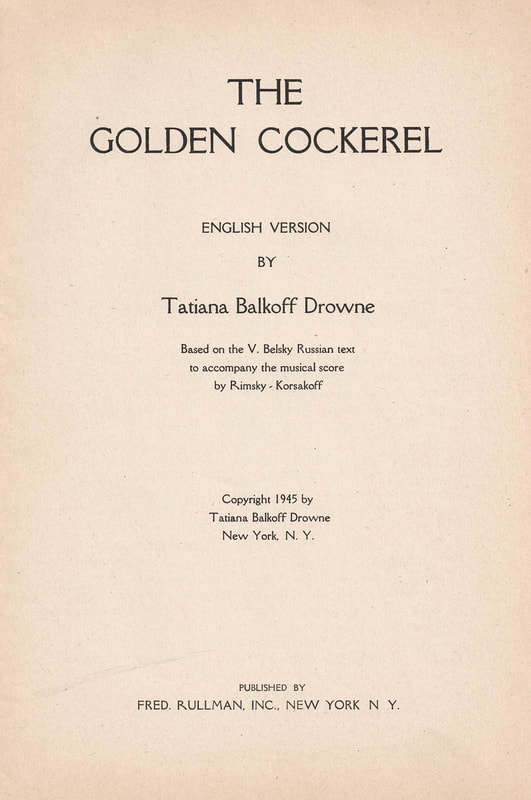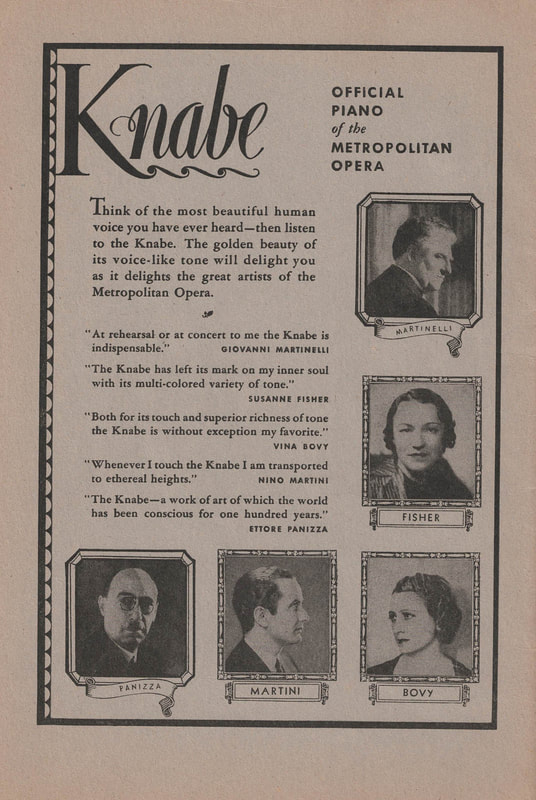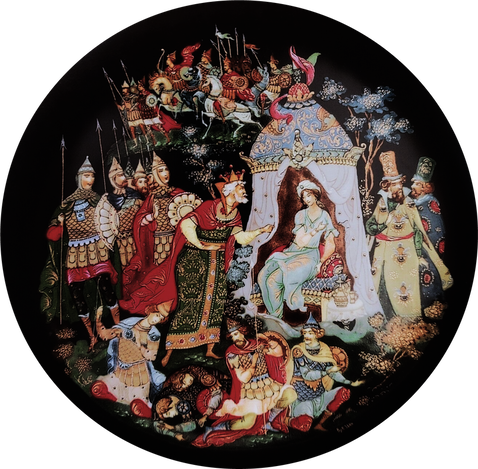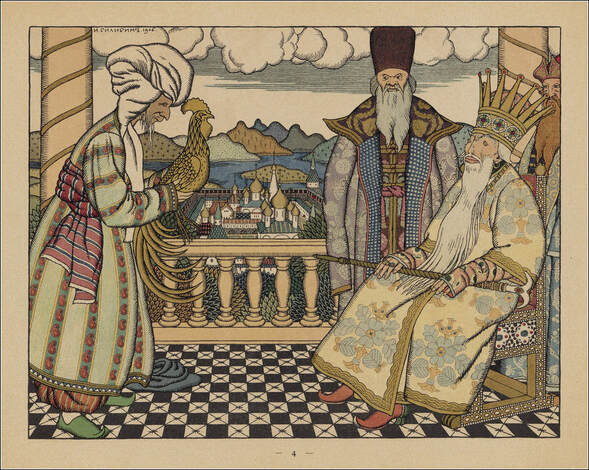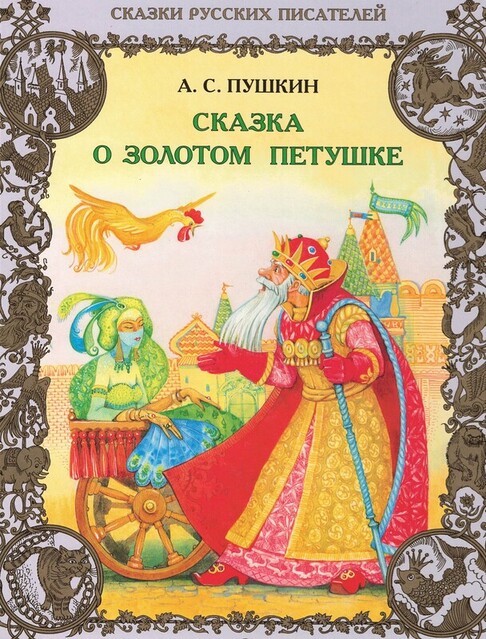Objects Case
The Golden Cockerel Libretto
Printed by Fred. Rullman, Inc., 1945
Translated from Russian to English
Many people who have never attended an opera assume that everyone in the audience is able to understand whatever language the story is being presented in. That is far from the case. Here is a libretto (the words heard in an opera) printed in 1945 for a production of The Golden Cockerel at the Metropolitan Opera House in New York. The program not only includes the full libretto in English, but a synopsis of the story and a list of the main characters and their vocal role. Specific performers are not listed as different performances may have featured different singers.
Today, most opera houses have subtitles projected somewhere near the stage. The Metropolitan Opera in New York has a patented system where audience members can choose from several different languages and see the translation discreetly projected on the back of the seat in front of them.
Printed by Fred. Rullman, Inc., 1945
Translated from Russian to English
Many people who have never attended an opera assume that everyone in the audience is able to understand whatever language the story is being presented in. That is far from the case. Here is a libretto (the words heard in an opera) printed in 1945 for a production of The Golden Cockerel at the Metropolitan Opera House in New York. The program not only includes the full libretto in English, but a synopsis of the story and a list of the main characters and their vocal role. Specific performers are not listed as different performances may have featured different singers.
Today, most opera houses have subtitles projected somewhere near the stage. The Metropolitan Opera in New York has a patented system where audience members can choose from several different languages and see the translation discreetly projected on the back of the seat in front of them.
Hand-decorated porcelain plate
Russian Legends Series
Made in Russia
Bradford Exchange, 1989
This plate was designed to imitate Russian lacquer, a traditional artform that dates back to the late middle ages. Folktales were a popular subject of lacquer artists, who would create finely detailed and colorful paintings on papier-mâché. Lacquer objects included small boxes, panel paintings, and sometimes jewelry.
In this scene, Tsar Dodon has just arrived at the camp of the Shemakhan Queen to discover his two sons are dead and their forces in retreat. Shemakha was a real place and once part of the Russian Empire. The city of Shemakhi was its capital and is located in modern-day Azerbaijan. Shemakha was once part of the Persian Empire and it is situated near the eastern shores of the Caspian Sea. Subsequently, the Shemakhan Queen of both Pushkin's poem and Rimsky-Korsakov's opera is frequently depicted as a beautiful and "exotic" Middle Eastern woman.
Russian Legends Series
Made in Russia
Bradford Exchange, 1989
This plate was designed to imitate Russian lacquer, a traditional artform that dates back to the late middle ages. Folktales were a popular subject of lacquer artists, who would create finely detailed and colorful paintings on papier-mâché. Lacquer objects included small boxes, panel paintings, and sometimes jewelry.
In this scene, Tsar Dodon has just arrived at the camp of the Shemakhan Queen to discover his two sons are dead and their forces in retreat. Shemakha was a real place and once part of the Russian Empire. The city of Shemakhi was its capital and is located in modern-day Azerbaijan. Shemakha was once part of the Persian Empire and it is situated near the eastern shores of the Caspian Sea. Subsequently, the Shemakhan Queen of both Pushkin's poem and Rimsky-Korsakov's opera is frequently depicted as a beautiful and "exotic" Middle Eastern woman.
The Tale of the Golden Cockerel, 1975
Text by Alexander Pushkin
Translation by Emme Edizioni
Illustrated by Ivan Iakovlevich Bilibin
The Tale of the Golden Cockerel by Alexander Pushkin was originally published in 1835. This edition, printed in 1975, is a reprint of the original 1907 version of the book. It includes illustrations by Ivan Bilibin who designed the sets for the opera's first production which premiered in 1909. Pushkin's original poem included references to adult subject matter that was later edited to make the story more appropriate for children.
Text by Alexander Pushkin
Translation by Emme Edizioni
Illustrated by Ivan Iakovlevich Bilibin
The Tale of the Golden Cockerel by Alexander Pushkin was originally published in 1835. This edition, printed in 1975, is a reprint of the original 1907 version of the book. It includes illustrations by Ivan Bilibin who designed the sets for the opera's first production which premiered in 1909. Pushkin's original poem included references to adult subject matter that was later edited to make the story more appropriate for children.
The Tale of the Golden Cockerel, 1997
Illustrations by V. Chemyakina
White City Press, Moscow
This colorfully illustrated version of Pushkin's poem was created in Russia for Russian children. It was part of a series of fairy tales by Russian writers. Only 15,000 copies of this edition were printed and it is a scarce volume to find.
Pushkin's Golden Cockerel wasn't intended to be a fairy tale in the true sense of the genre, but it has since become part of the Russian canon of fairy tales and is still very popular with children today.
Illustrations by V. Chemyakina
White City Press, Moscow
This colorfully illustrated version of Pushkin's poem was created in Russia for Russian children. It was part of a series of fairy tales by Russian writers. Only 15,000 copies of this edition were printed and it is a scarce volume to find.
Pushkin's Golden Cockerel wasn't intended to be a fairy tale in the true sense of the genre, but it has since become part of the Russian canon of fairy tales and is still very popular with children today.

